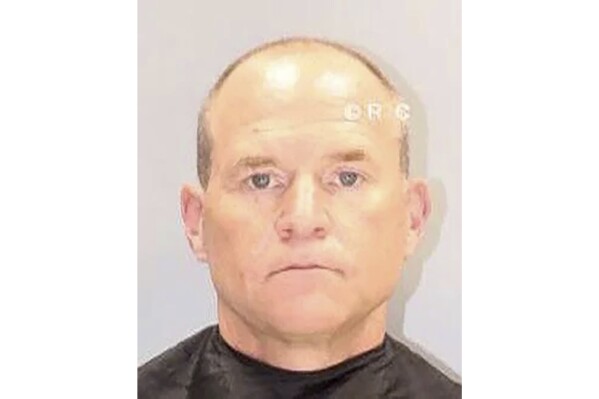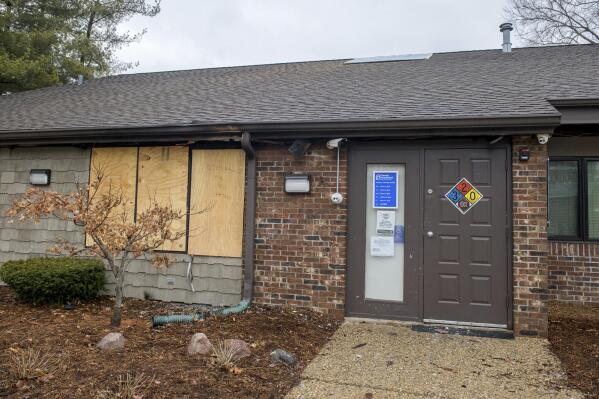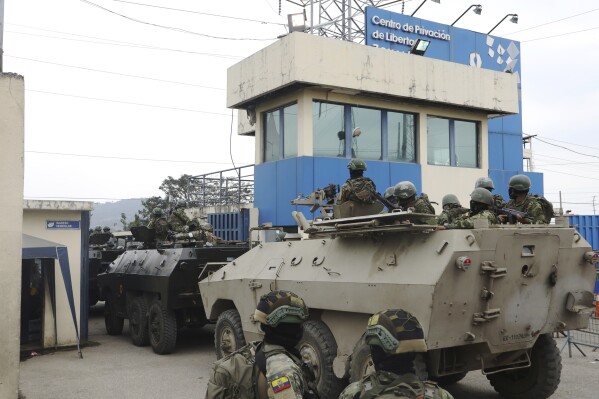Hearing begins over incarcerated youths being held at Louisiana’s maximum-security prison
BATON ROUGE, La. (AP) — A court hearing over whether to remove incarcerated youths from a temporary lockup at the Louisiana State Penitentiary — a remote maximum-security adult prison with a notorious history of violence — began Tuesday.
For months, youths have said that they are being held in harmful conditions, suffering through dangerous heat waves, extended containment to their cells, foul water and inadequate schooling. On Tuesday, the court heard testimony from facility staff about the operation of and day-to-day life at Angola.
In addition, the federal judge presiding over the hearing — who recently visited the former death row building where juvenile detainees are held — shared her own observations.
U.S. District Judge Shelly Dick described seeing at least four youths in handcuffs during her visit — one eating in the dining hall overseen by a security guard and a group of three restrained youths playing cards. Linda London, the facilities director for the state’s Office of Juvenile Justice, said on Tuesday that the juveniles had been restrained because they “had displayed aggressive behavior.”
 Alex Murdaugh’s friend gets almost 4 years in prison for helping steal from his dead maid’s family
Alex Murdaugh’s friend gets almost 4 years in prison for helping steal from his dead maid’s family
 A man who set a fire at an Illinois Planned Parenthood clinic sentenced to 10 years in prison
A man who set a fire at an Illinois Planned Parenthood clinic sentenced to 10 years in prison
 Leader of Ecuadorian crime gang moved to maximum-security prison days after candidate’s killing
Leader of Ecuadorian crime gang moved to maximum-security prison days after candidate’s killing
When Dick asked if the use of handcuffs had been documented, London replied, “I don’t think it was.”
Attorneys for some of the youths have filed an emergency motion seeking to remove them from the prison. They focused much of the hearing on cell restriction, which is when incarcerated youths are contained to their cells for extended periods because of their behavior — threats or intimidation, attempting to escape, assault or damaging property. They also can be contained to their cells due to suicide watch or while they first transition to the facility, which can take up to 72 hours.
Henry Patterson IV, a juvenile justice specialist who is responsible for the youths’ care and safety, described cell restriction as a way to “teach youths that they need to be held accountable for their behavior.” Patterson said the longest he has seen a juvenile restricted to their cell was for five or six days — with opportunity to leave for phone calls and medical or mental health appointments.
But Alanah Odoms, the director of Louisiana’s American Civil Liberties Union, said after the hearing: “Children are currently being locked away in cages in Angola.” The hearing is currently scheduled to continue through Thursday.
Juveniles at Angola are housed in single cells, in a building separate from the adult prison population. In the small cell is a bed, toilet, faucet and two shelves. Outside of their room is a TV, which they can watch during recreation time. They eat breakfast and some dinners in the cell. Currently, 15 youths are housed at the facility.
Details of the detainees’ school lives at the facility were also revealed, most notably that there is only one classroom in use. Originally there were three, but because of damage caused by the youths, staff say two had to be closed. As a result, the inmates spend half their school day in the classroom and the other half learning from their cells using booklets and online instruction.
Scorching temperatures at the facility during the summer months are of particular concern. On Monday, Louisiana Gov. John Bel Edwards declared a state of emergency because of extreme heat. While staff say the building has air conditioning, advocates claim the building is very warm and due to power outages, juveniles have gone without air conditioning for multiple days.
High-risk incarcerated youths, based on their aggressive tendencies and other factors, were first transferred to Angola in October. As many as 70 or more have moved through the facility, the ACLU said.
The plan to move youths to the temporary lockup was sparked by concerns about capacity, safety and service at ailing juvenile detention facilities. Worsening problems at youth detention centers came to a head last summer after a 20-person riot at one of the lockups and multiple escapes from a facility in suburban New Orleans, including one that allegedly ended with a violent carjacking.
Ever since the transfer to Angola was first announced, opponents have pushed back. In August, a lawsuit was filed to stop the transfers. The lawsuit questioned the state’s ability to protect the juveniles and provide them with needed services at the prison.
In September, Dick declined to remove the youths. At the time, she said that “while locking children in cells at night at Angola is untenable, the threat of harm the youngsters present to themselves, and others, is intolerable.”
The state agency plans to move teens out of Angola by mid-November and place them in a new secure care facility, currently being built in Monroe.
Disclaimer: The copyright of this article belongs to the original author. Reposting this article is solely for the purpose of information dissemination and does not constitute any investment advice. If there is any infringement, please contact us immediately. We will make corrections or deletions as necessary. Thank you.




